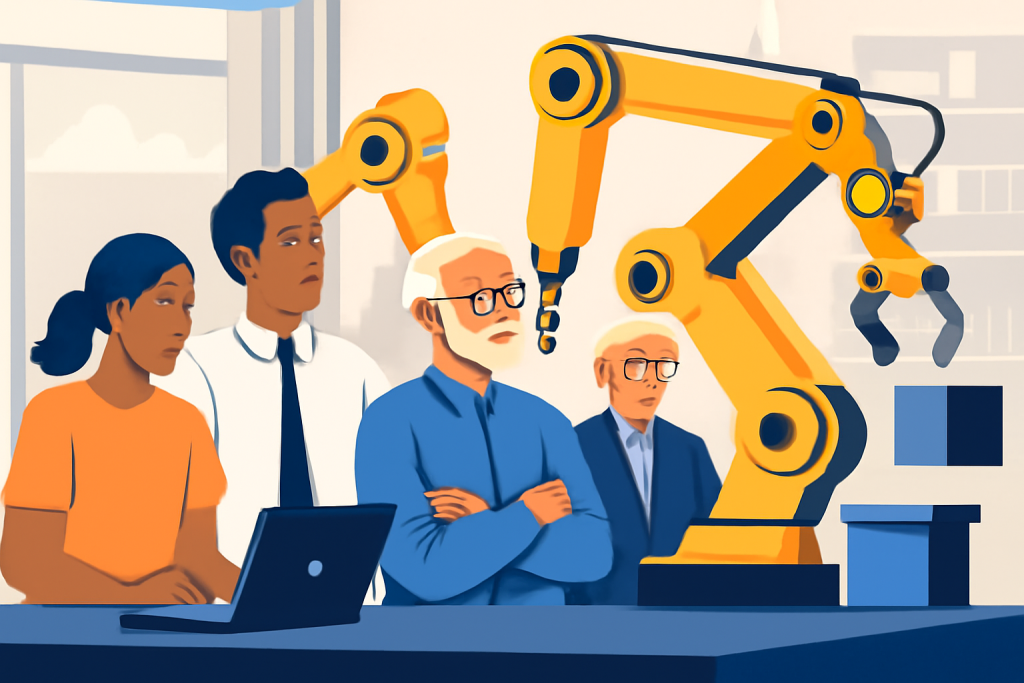Automation is reshaping the global job market faster than ever before. From AI-driven customer service bots to robotic assembly lines, we see the impact of automation on job markets – automation technologies are disrupting traditional roles and creating new opportunities—but not without challenges. This article explores the latest trends in automation’s impact on jobs, revealing which sectors are most affected, what skills workers need to thrive, and how economies are adapting to this new reality.

Impact of Automation on Job Markets Today
Automation is no longer a futuristic concept—it’s a present-day force affecting millions of workers worldwide. Technologies such as artificial intelligence (AI), machine learning, robotics, and advanced software are replacing repetitive, manual tasks while augmenting complex ones.
Jobs Most at Risk and Those Thriving
- At Risk: Roles involving routine physical or cognitive tasks are highly susceptible to automation. Manufacturing line jobs, data entry clerks, and some customer support positions face significant reduction. For example, in automotive factories, robots now handle up to 40% of assembly line tasks (McKinsey, 2023).
- Thriving Sectors: Conversely, jobs requiring creativity, emotional intelligence, complex problem-solving, and advanced technical skills are growing. These include software development, AI training specialists, healthcare professionals, and green energy jobs.
Automation’s Dual Impact on Employment
Automation doesn’t only destroy jobs—it transforms them and creates new roles. The World Economic Forum (WEF) estimates that by 2027, automation will displace 85 million jobs but also generate 97 million new ones, particularly in tech and care industries (WEF, 2023). The challenge lies in managing this transition effectively.
Key Trends Shaping Automation and Employment in 2025
1. AI and Machine Learning Taking Center Stage
AI-powered tools are increasingly performing tasks traditionally done by humans, from analyzing data to managing customer interactions. For instance, chatbots now handle nearly 70% of initial customer queries in sectors like banking and telecom (Gartner, 2024). This shift reduces entry-level customer service roles but boosts demand for AI trainers and supervisors.
2. Remote Work and Automation Integration
The rise of remote work accelerated by the COVID-19 pandemic has combined with automation to change workflows drastically. Digital platforms automate routine administrative tasks, allowing remote teams to focus on strategic initiatives. This integration is boosting productivity but requires workers to upgrade digital skills.
3. Upskilling and Reskilling as a Workforce Imperative
The fastest-growing jobs require hybrid skills—combining human insight with technological fluency. Governments and companies worldwide are investing billions in workforce training programs. The U.S. government allocated over $2 billion in 2024 for digital skills training aimed at helping displaced workers transition (U.S. Department of Labor, 2024).
Practical Steps for Workers to Stay Relevant
Whether you’re entering the workforce or looking to future-proof your career, these strategies are critical in the age of automation:
- Embrace Lifelong Learning: Continuously update your skills with online courses in AI basics, data analytics, and digital literacy.
- Develop Soft Skills: Communication, empathy, creativity, and critical thinking cannot be easily automated and are increasingly valued.
- Explore Emerging Fields: Careers in AI ethics, robotics maintenance, renewable energy, and cybersecurity are expanding rapidly.
- Leverage Technology: Use automation tools yourself to increase efficiency in your current role.
What Employers and Policymakers Must Do
The responsibility to navigate automation’s impact extends beyond individual workers. Employers should:
- Invest in employee retraining and transition support.
- Redesign jobs to combine human and automated work effectively.
- Promote diversity in tech roles to avoid skill shortages.
Policymakers should:
- Encourage public-private partnerships to fund reskilling programs.
- Implement safety nets for displaced workers.
- Foster innovation ecosystems that create new job categories.
The Future Outlook: Balancing Automation with Human Value
Automation’s impact on job markets will continue accelerating. While automation promises efficiency and economic growth, the social implications demand careful management. Preparing workers through education and adaptable policies will be crucial to harness automation’s benefits without leaving anyone behind.
Summary
The key takeaway: automation is reshaping the labor landscape dramatically, but it also offers opportunities for those willing to adapt. Understanding automation’s impact on job markets is vital for individuals, businesses, and governments alike as they prepare for the workforce of tomorrow.
References
- McKinsey & Company (2023). “The future of work after COVID-19.” Available at: https://www.mckinsey.com/future-of-work
- World Economic Forum (2023). “The Future of Jobs Report 2023.” Available at: https://www.weforum.org/reports/the-future-of-jobs-report-2023
- Gartner (2024). “AI and Customer Service: Trends and Impact.” Available at: https://www.gartner.com/en/newsroom
- U.S. Department of Labor (2024). “Digital Skills Training Grants.” Available at: https://www.dol.gov/newsroom






